This article presents the major outputs from a research project, “Assessment of Adelgid diversity and distribution in conifer forest of Bhutan to mitigate future outbreaks (AFoCO/019/2020)” in Bhutan. This two-year project is implemented under the collaboration between AFoCO, NIFoS (National Institute of Forest Science) of the Republic of Korea, and UWICER (Ugyen Wangchuck Insitute for Conservation and Environment Research) under the Department of Forest and Park Services of Bhutan.
Forest is an important biological community that plays an important role in Bhutan’s socio-economic and ecological landscape. Conserving and protecting the forest from biotic and abiotic disturbance is vital for ensuring an uninterrupted flow of ecosystem services and this is more so important in the case of Bhutan where the economy of the country is largely dependent on hydropower and eco-tourism. In addition, forest disturbances such as insect pest outbreaks can decrease forest productivity and in the worst scenario can lead to mass tree mortality and ecosystem collapse. Therefore, detecting, delimiting, and monitoring any potential forest insect pest is important in managing the pest population through integrated pest management. As adelgid is perceived as a possible forest pest that could damage coniferous forests and directly impact the timber production in the country, it was important to initiate a study on the species and generate information on its diversity and distribution to come up with appropriate measures to reduce future outbreaks.
In Bhutan, research and studies on forest pests and pathogens in the 1980s have generated a lot of information and knowledge on the subject. However, there is no information on adelgid, its biology, diversity and distribution, its effect on the host plant, or its ecological and economic impacts. Therefore, the project aimed to meet the following objectives:
- determine the species of adelgids found in Bhutan
- survey and assess the distribution of adelgids in conifer forests of Bhutan
- develop management strategies for controlling the adelgids in conifer forests of Bhutan
- train forestry professionals and local communities in the identification, survey, and control of the insect
- monitor the spread of the insect by integrating the insect pest surveillance into the spatial reporting and monitoring tool (SMART)
Major Outputs
Species of Adelgids determined
One of the main objective of the project is to determine the species of adelgids found in Bhutan for which samples from major conifer species from western and central has been collected. The samples were analyzed by Nathan P. Havill, Research Entomologist, US Forest Service using DNA barcoding, and four adelgid and one aphid species (refer to Table 1) have been identified and adelgid species on spruce are found to produce gall. Adelgid samples from eastern Bhutan have been collected and sent to the US for DNA barcoding. All the species will be a new record to Bhutan and will be included in the species list of Bhutan.
| Genus | Species | Host Plant | Locality |
|---|---|---|---|
| Adelges | glandulae | Abies densa | Changaphu/Thimphu |
| Adelges | Nr. viridana | Picea spinulosa | Changaphu/Thimphu |
| Pineus | armandicola | Pinus wallichiana | Uruk and lamaigoenpa |
| Adelges | Tsugae | Tsuga dumosa | Uruk |
| Cinara | Piniarmandicola* | Abies densa | Changaphu/Thimphu |
Capacity of forestry staff improved in pest detection and reporting streamlined through SMART system
The project has been instrumental in creating awareness and building capacity among the field staff in detecting and reporting any forest pest through spatial reporting and monitoring tools (SMART). So far Training of Trainers for 18 staff (refer to figure 2) from the Park and Field Division has been conducted and consequently, those who underwent ToT also conducted the same training in their respective field offices for an additional 81 forestry staff. Those who underwent the training program also participated in the survey and collection of samples from the project sites
Survey and collection of samples
The training participants actively participated in the survey and collection of samples from the project areas. In total, samples have been collected from 100 sites covering major conifer tree species across Bhutan.
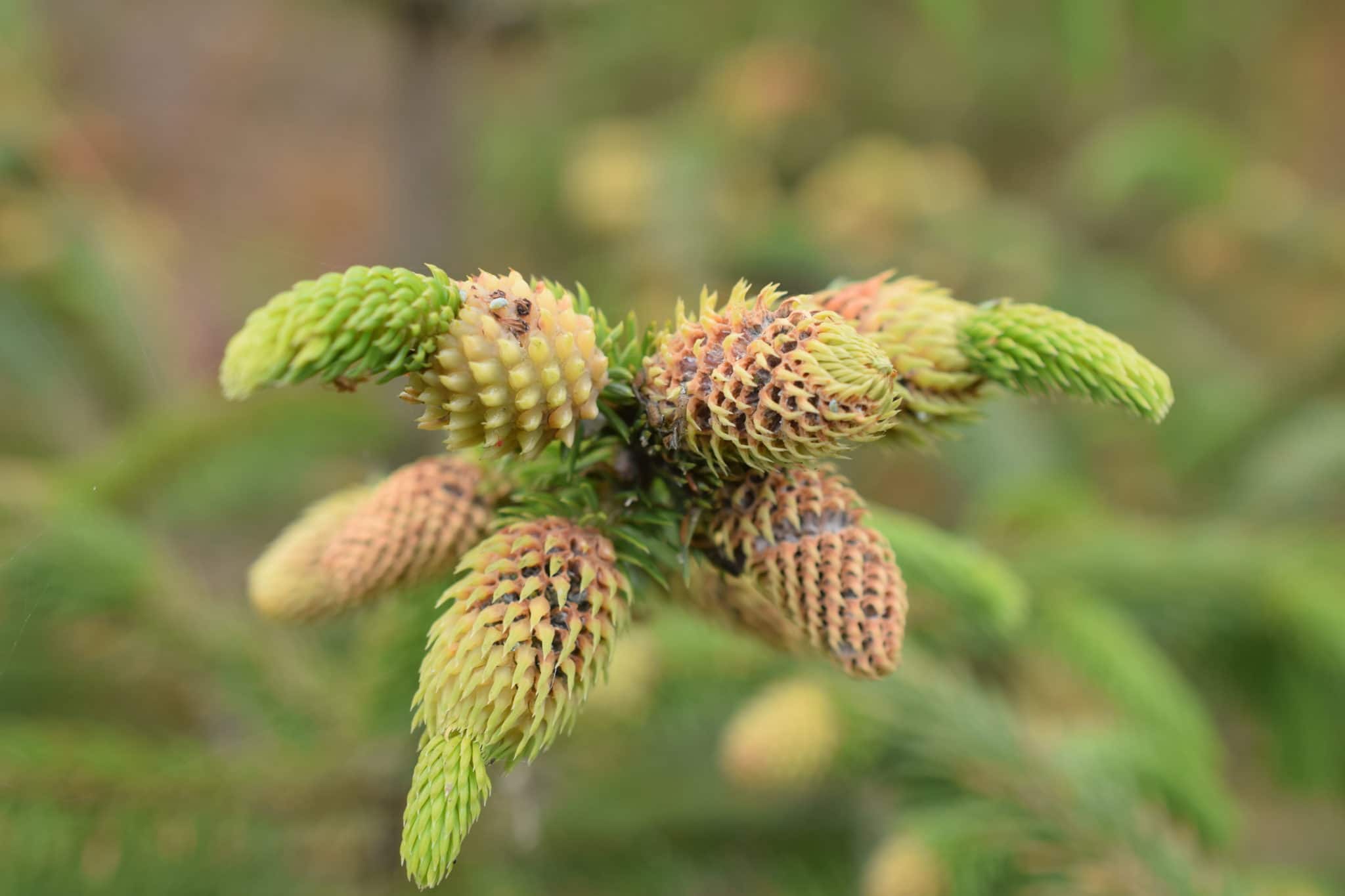
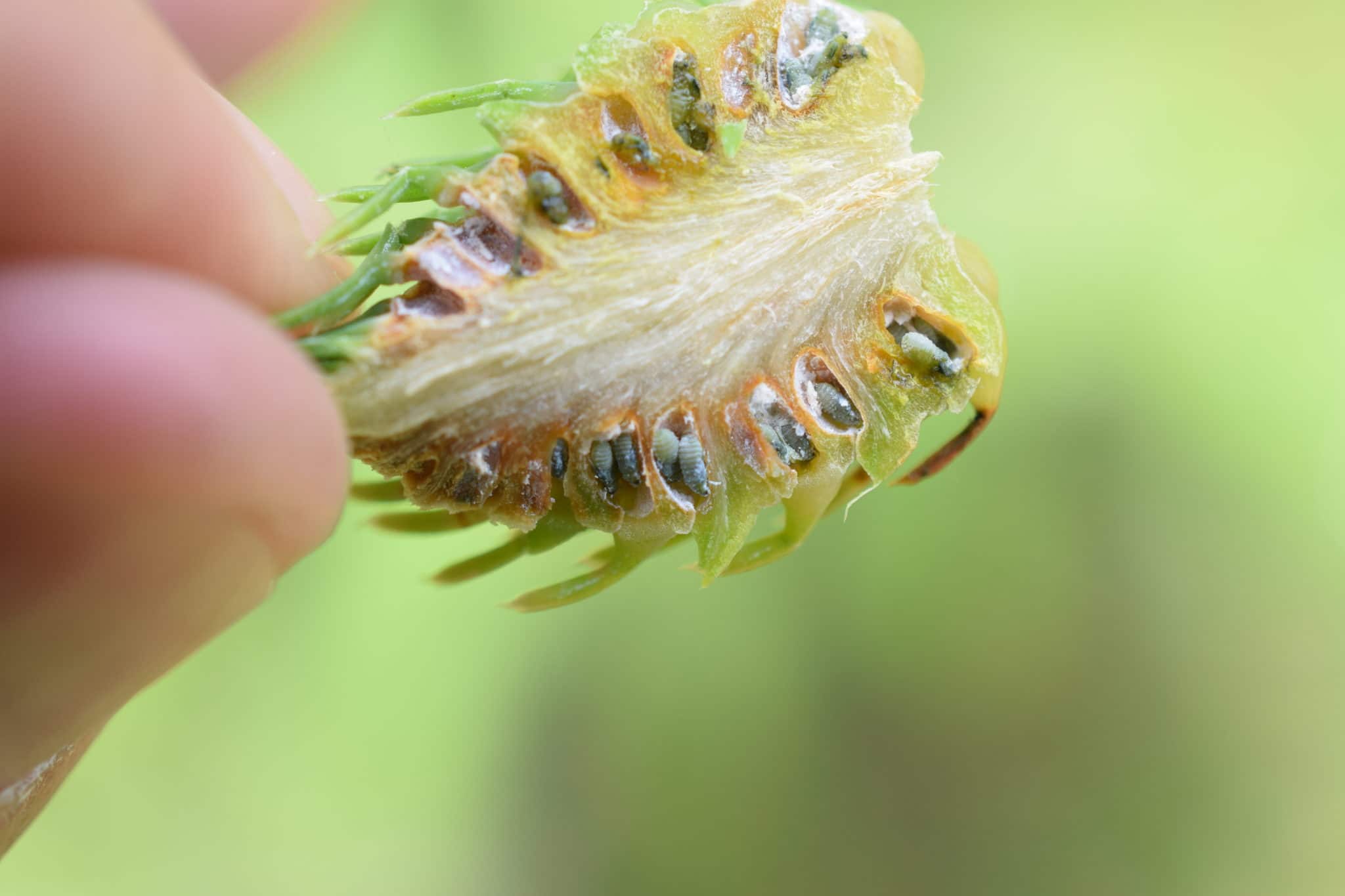
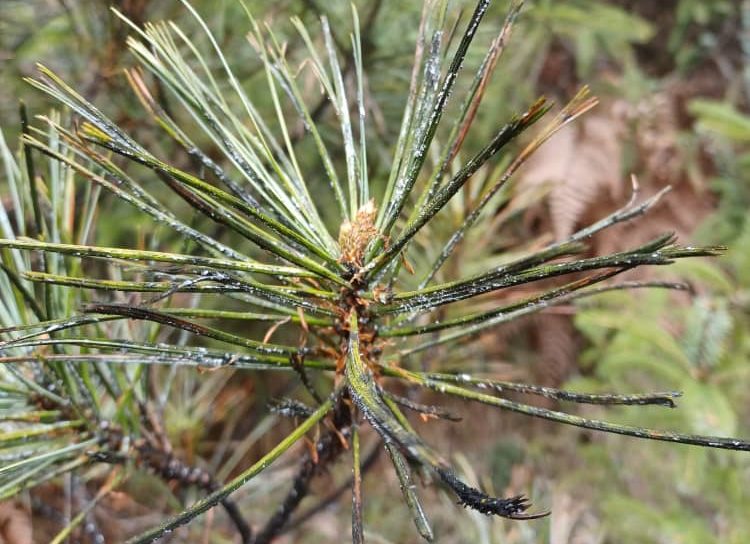
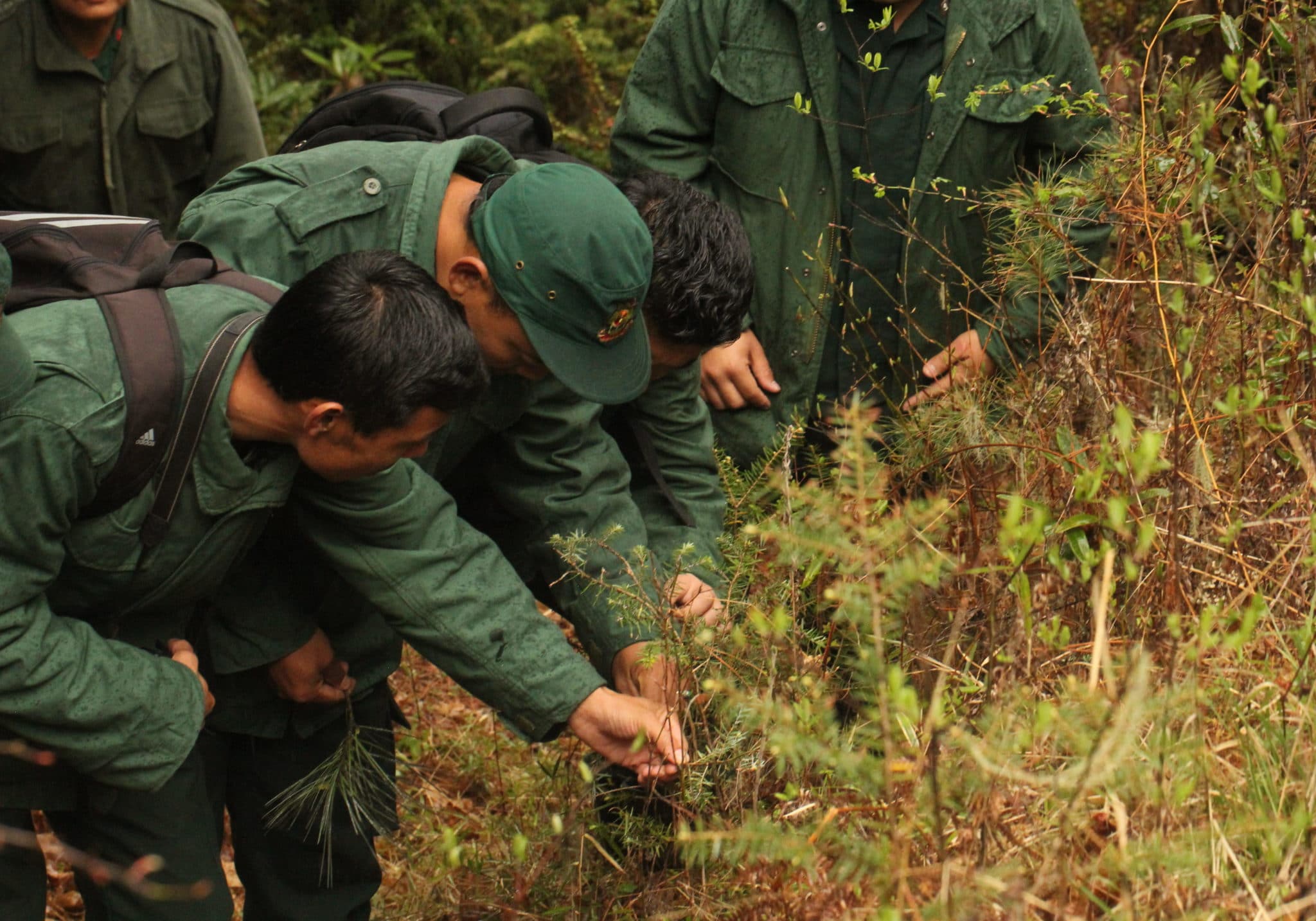
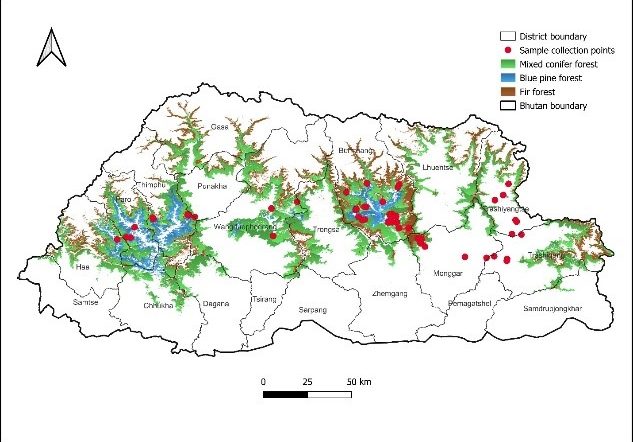
Forest management implications
Major ecosystems across the globe are facing an unprecedented challenge as a result of increasing incidences of pest outbreaks. Pest outbreaks are further exacerbated by changes in land use, the introduction of species out of their range through global trade, and climate change. Early detection of potential pests, improved monitoring, preempting, and assessment of possible responses to potential pests will be crucial in limiting or reducing the damage to forest and allied ecosystem services
Contributed by Mr.Lobzang Dorji, Director of Forest Protection and Enforcement Division, Department of Forests and Park Services of Bhutan

